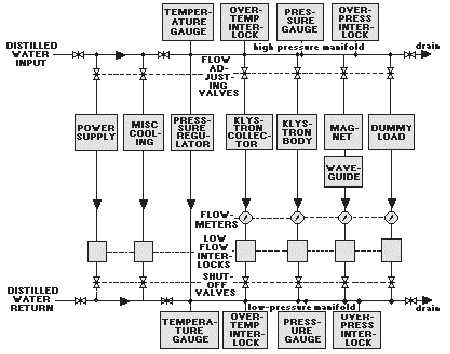4-20
however, equipment cabinets must have additional cooling to control the internal temperature. In the case
of transmitters (and other high-voltage circuits), individual components may require cooling.
Cabinets that generate relatively small amounts of heat may only require a system of fans or blowers
to maintain constant air circulation. In some cases the air is circulated through a liquid-cooled heat
exchanger located inside the cabinet.
Most low-power amplifier tubes are air cooled; most high-power tubes, such as klystrons, crossed-
field amplifiers, and magnetrons, are liquid cooled.
The main source of power and heat in a power amplifier package is the high-voltage power supply.
Part of the power produced by the power amplifier is transmitted in the form of rf energy; the remainder
of the power eventually converts to heat, and cooling is required to dissipate the heat.
Radars that use blowers for cooling will usually have an airflow sensing switch. If the blower fails,
the switch will open and remove power from appropriate power supplies. Radars employing liquid
cooling normally distribute the liquid into a large number of separate paths, because the flow
requirements are quite dissimilar. Each of the various paths will have a low flow interlock. If one of the
liquid cooling paths becomes restricted, the low flow interlock switch will open and remove power from
the radar.
Liquid cooling systems also include pressure gauges and switches, temperature gauges, and
overtemperature switches. Many systems have pressure or flow regulators. Some systems include audio
and/or visual alarms that energize before damage actually occurs. In some cases this allows the problem
to be corrected without turning off the equipment.
Figure 4-15 illustrates a typical transmitter cooling system showing the many protective devices.
Figure 4-15.—Typical transmitter cooling system.

